
The cantaloupe is a type of true melon from the family Cucurbitaceae. Originally, cantaloupe referred only to the non-netted, orange-fleshed melons of Europe, but today may refer to any orange-fleshed melon of the C. melo species, including the netted muskmelon which is called cantaloupe in North America, rockmelon in Australia and New Zealand, and spanspek in Southern Africa. Cantaloupes range in mass from 0.5 to 5 kilograms.

Peoria is a city in and county seat of Peoria County, Illinois, United States. Located on the Illinois River, the city had a population of 113,150 as of the 2020 census. It is the principal city of the Peoria metropolitan area in Central Illinois, consisting of the counties of Fulton, Marshall, Peoria, Stark, Tazewell, and Woodford, which had a population of 402,391 in 2020.

The Agricultural Research Service (ARS) is the principal in-house research agency of the United States Department of Agriculture (USDA). ARS is one of four agencies in USDA's Research, Education and Economics mission area. ARS is charged with extending the nation's scientific knowledge and solving agricultural problems through its four national program areas: nutrition, food safety and quality; animal production and protection; natural resources and sustainable agricultural systems; and crop production and protection. ARS research focuses on solving problems affecting Americans every day. The ARS Headquarters is located in the Jamie L. Whitten Building on Independence Avenue in Washington, D.C., and the headquarters staff is located at the George Washington Carver Center (GWCC) in Beltsville, Maryland. For 2018, its budget was $1.2 billion.

Plum Island Animal Disease Center (PIADC) is a United States federal research facility dedicated to the study of foreign animal diseases of livestock. It is a national laboratory of the Department of Homeland Security (DHS) Directorate for Science and Technology (S&T), and operates as a partnership with the U.S. Department of Agriculture (USDA). The facility's director is Dr. Larry Barrett.
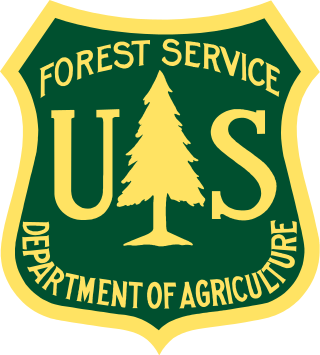
The Forest Products Laboratory (FPL) is the national research laboratory of the United States Forest Service, which is part of USDA. Since its opening in 1910, the FPL has provided scientific research on wood, wood products and their commercial uses in partnership with academia, industry, tribal, state, local and other government agencies. The laboratory is headquartered in Madison, Wisconsin. The focus of the Forest Products Laboratory is to promote healthy forests and forest-based economies through the efficient, sustainable use of the Nation's wood resources.
Timothy L. Mounts (1937—1997) was an American chemist, active in the field of agriculture technology.
Peter Berghsey Johnsen is an American scientist, administrator and adventurer.

Central Illinois is a region of the U.S. state of Illinois that consists of the entire central third of the state, divided from north to south. Also known as the Heart of Illinois, it is characterized by small towns and mid-sized cities. Agriculture, particularly corn and soybeans, as well as educational institutions and manufacturing centers, figure prominently.
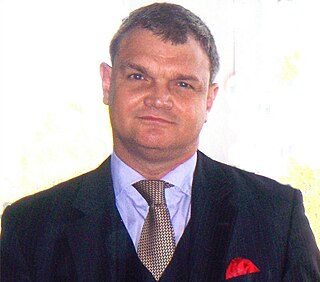
Kevin Brown has been Trust Archivist and Alexander Fleming Laboratory Museum Curator at St Mary's NHS Trust, subsequently Imperial College Healthcare NHS Trust, since 1989, having set up the archives service for St Mary's Hospital, Paddington, London, England, in 1989 and having established the museum in 1993.
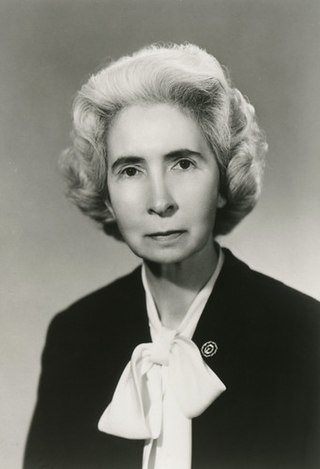
Allene Rosalind Jeanes was an American chemist whose pioneering work significantly impacted carbohydrate chemistry. Born in 1906 in Texas, Jeanes' notable contributions include the development of Dextran, a lifesaving blood plasma substitute used in the Korean and Vietnam wars, and Xanthan gum, a polysaccharide commonly used in the food, cosmetics, and pharmaceutical industries. Jeanes' innovations have had a lasting influence on medical treatments and everyday consumer products, highlighting her role as a key figure in applied carbohydrate science. Her achievements earned her numerous accolades, including being the first woman to receive the Distinguished Service Award from the U.S. Department of Agriculture.
The Eastern Regional Research Center (ERRC) is a United States Department of Agriculture laboratory center in Wyndmoor, Pennsylvania. The Center researches new industrial and food uses for agricultural commodities, develops new technology to improve environmental quality, and provides technical support to federal regulatory and action agencies.
The U.S. National Plant Germplasm System (NPGS) is a network of institutions and agencies led by the Agricultural Research Service (ARS) of the U.S. Department of Agriculture in the effort to conserve and facilitate the use of the genetic diversity of agriculturally important plants and their wild relatives.

The United States Department of Agriculture Southern Regional Research Center (SRRC) is one of four regional laboratories within the United States Department of Agriculture's Agricultural Research Service. Principal research areas of the SRRC include food safety, global food security, climate change, biofuels, agricultural sustainability, health and nutrition. It furthermore emphasizes improved product quality of natural fibers especially cotton, according to the SRRC's mission statement. The SRRC laboratory is located at 1100 Allen Toussaint Blvd, New Orleans, Louisiana 70124-4305. It has an annual budget of approximately $25 million, employing 70 scientists and 130 other people in laboratory support roles.
The Jean Mayer Human Nutrition Research Center on Aging (HNRCA), located in Boston, Massachusetts, is one of six human nutrition research centers in the United States supported by the United States Department of Agriculture Agricultural Research Service. The goal of the HNRCA, which is managed by Tufts University, is to explore the relationship between nutrition, physical activity, and healthy and active aging.
The Western Regional Research Center (WRRC), located in Albany, California, is one of four regional laboratories within the Agricultural Research Service of the United States Department of Agriculture. The WRRC has six research units, which conduct research into food production, processing, safety, bioproducts and invasive species control.
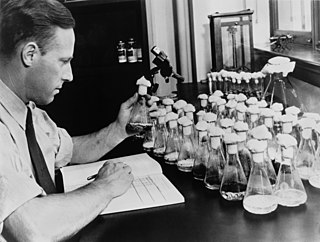
Andrew J. Moyer was an American microbiologist. He was a researcher at the USDA Northern Regional Research Laboratory in Peoria, Illinois. His group was responsible for the development of techniques for the mass production of penicillin. This led to the wide scale use of penicillin in World War II. Moyer was inducted into the National Inventors Hall of Fame in 1987. A scholarship fund was created in his name at the University of Maryland in 1977.
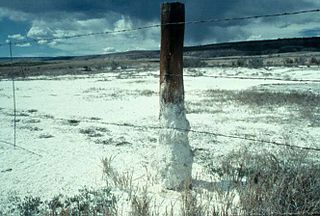
The U.S. Salinity Laboratory is a National Laboratory for research on salt-affected soil-plant-water systems. It resorts under the Agricultural Research Service (ARS) of the United States Department of Agriculture (USDA) and is located in Riverside, California, U.S.A.
A state microbe is a microorganism used as an official state symbol. Several U.S. states have honored microorganisms by nominating them to become official state symbols. The first state to declare an Official State Microbe is Oregon which chose Saccharomyces cerevisiae as the Official Microbe of the State of Oregon in 2013 for its significance to the craft beer industry in Oregon. One of the first proponents of State Microbes was microbiologist Moselio Schaechter, who, in 2010, commented on Official Microbes for the American Society for Microbiology's blog "Small Things Considered" as well as on National Public Radio's "All Things Considered".

Elizabeth Anna Ainsworth is an American plant physiologist currently employed by the United States Department of Agriculture (USDA) Agricultural Research Service (ARS). She also is an adjunct professor of the University of Illinois at Urbana-Champaign (UIUC), a Fellow of the American Association for the Advancement of Science (AAAS) and was awarded the 2018 Crop Science Society of America Presidential Award. She is known for her work concerning the effects of specific atmospheric pollutants, including ozone and carbon dioxide, on the productivity of selected major crops such as corn and soybeans.

Donald Richard Ort is an American botanist and biochemist. He is the Robert Emerson Professor of Plant Biology and Crop Sciences at the University of Illinois at Urbana-Champaign where he works on improving crop productivity and resilience to climate change by redesigning photosynthesis. He is a member of the National Academy of Sciences (NAS) and a fellow of the American Association for the Advancement of Science (AAAS) and American Society of Plant Biologists (ASPB).













